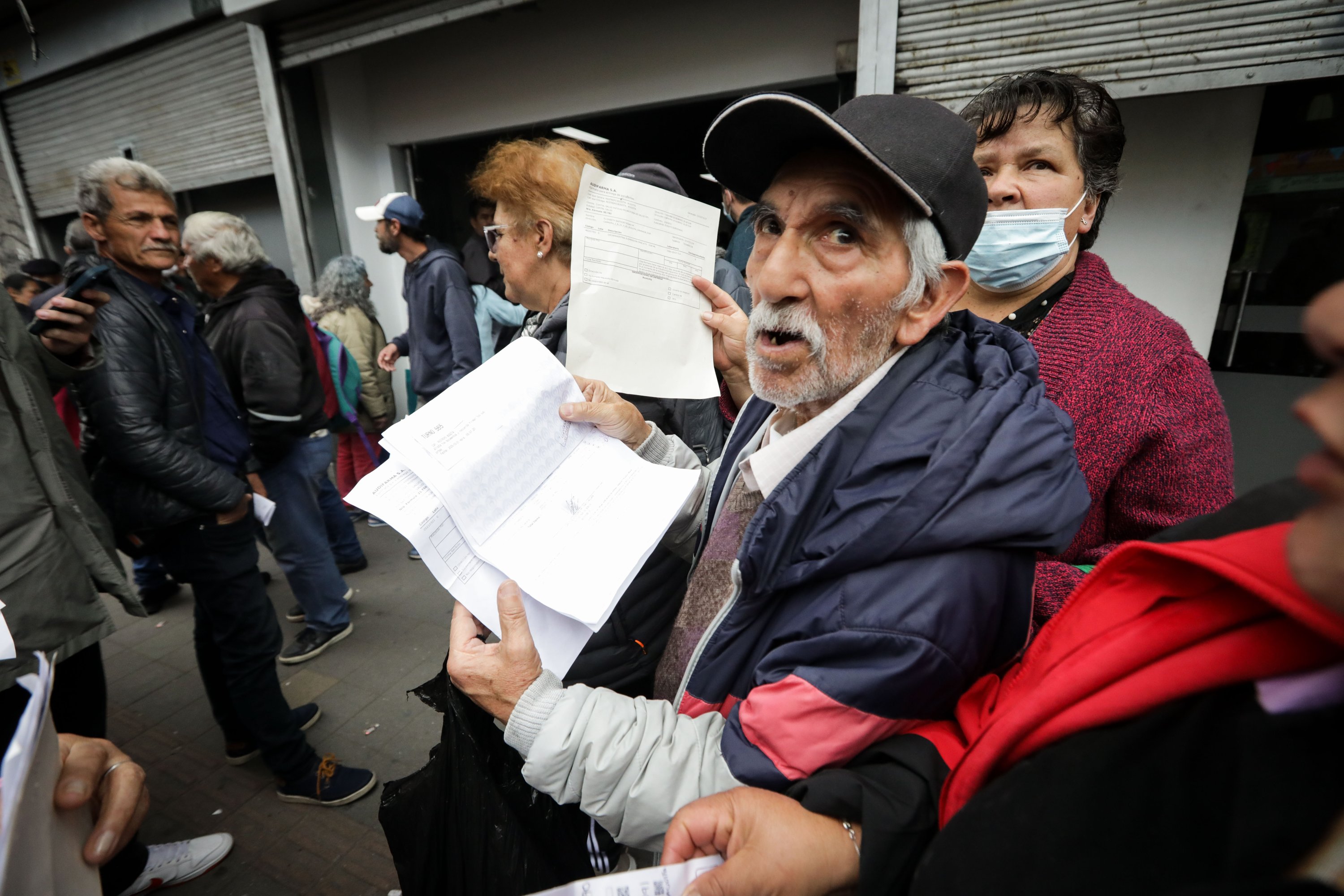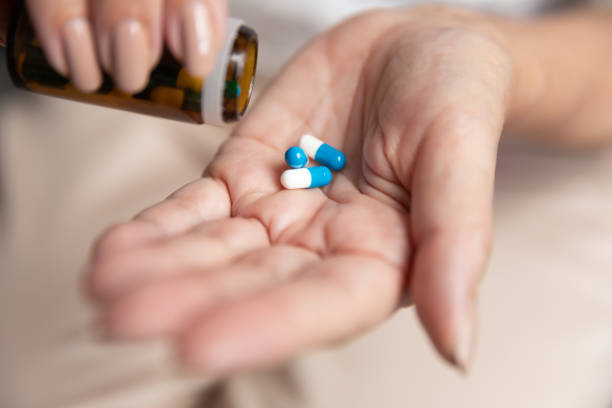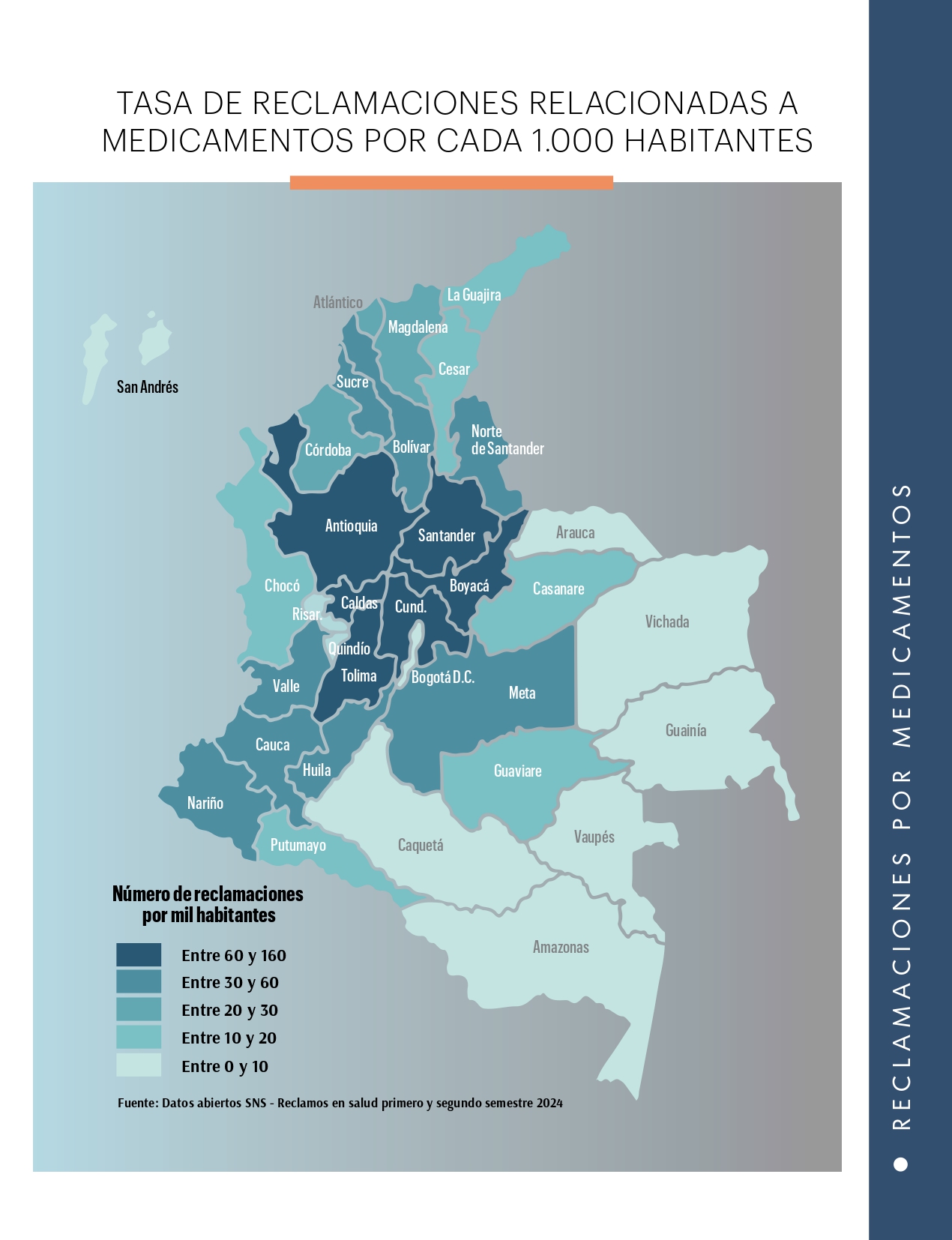Report: Drug-related claims and complaints have increased by 123% since August 2024

An estimated $19.4 billion pesos in public spending on medicines by the end of 2024 has not been enough to guarantee timely access to the treatments Colombians need. This is revealed in the most recent "Health in Figures" bulletin published by Acemi in June 2025, which details the evolution of medicine spending in Colombia between 2021 and 2024.
The report, based on data from the Ministry of Health's Drug Price Information System (Sismed), shows that since August of last year, there has been a 123% increase in drug-related complaints. In January 2025, the country reached its peak, with 52,655 PQRS (Requests, Complaints, Claims, and Requests) regarding access to health technologies, primarily pharmaceuticals.

Between 2021 and 2024, public spending on medicines grew by more than 6% annually. Photo: Mauricio Moreno / EL TIEMPO
The Acemi bulletin reports that total spending on medicines (public and private) increased from $20 billion in 2021 to an estimated $28.9 billion in 2024. In this sense, public spending refers to what is dispensed within the system, and private spending refers to what is consumed through the commercial channel.
The public component represents between 62% and 67.2% of the total, with the greatest weight in the years 2023 and 2024. In the last year alone, public spending amounted to $19.4 trillion.
The reasons behind this growth are related to several factors: the incorporation of new technologies into the Health Benefits Plan (PBS), rising international raw material prices, the inclusion of high-cost treatments, and an aging population.

Colombia spent $19.4 billion on medicines in 2024. Photo: iStock
One of the most significant findings is that four therapeutic groups account for between 58% and 63% of public spending: antineoplastic and immunomodulatory agents, medications for the digestive tract and metabolism, drugs for the cardiovascular system, and those related to blood and hematopoietic organs.
The group that increased its share of spending the most was dermatological products, with a cumulative growth of 75.7% between 2021 and 2024. This was followed by cardiovascular medications (38.6%) and respiratory system medications (30.5%).
The best-selling and most expensive drugs According to the report, in 2023, 26.6% of the total value of medicines delivered through the institutional channel was concentrated in just 30 products. Among them, the following stand out:
- Empagliflozin, used to treat type 2 diabetes, with 294,346 units sold.
- Pembrolizumab, a monoclonal antibody for cancer treatment, with an estimated cost of $283 billion.
- Nivolumab, another oncology immunotherapeutic, cost $238 billion.
- Metformin, a classic oral antidiabetic, with more than 150 billion in sales.
In the case of anticancer drugs (antineoplastic agents), which represent up to 17.5% of spending, 94% of the budget is allocated to drugs classified as “other antineoplastic agents,” such as Pembrolizumab, Osimertinib, Ibrutinib, Ruxolitinib, and Nivolumab.

Cancer drugs (antineoplastic agents) account for up to 17.5% of spending. Photo: iStock
Type 2 diabetes medications are also a key player: oral hypoglycemic agents account for more than 83% of spending in this category, with an estimated investment of between $1.1 and $1.4 trillion.
Autoimmune diseases and coagulation disorders: other high-cost sources Medications for autoimmune diseases accounted for between 6.4% and 6.6% of total drug spending. Active ingredients such as adalimumab, mycophenolic acid, abatacept, and tofacitinib stand out.
Significant sums were also allocated to conditions related to coagulation disorders, such as hemophilia and idiopathic thrombocytopenic purpura. Coagulation factor VIII and eltrombopag were among the most expensive, with expenditures of $234 billion and $142 billion, respectively.
In anticoagulants, Apixaban, Enoxaparin and Rivaroxaban accounted for a significant portion of the budget, due to their use in preventing strokes, thrombosis and embolisms.
Unequal access by region Despite the budget increase, access to medicines remains unequal in the country. According to the bulletin, 20 departments have higher rates of demand for medicines than the national average.
Guaviare leads the list with one in five complaints related to medications. Norte de Santander and Santander also report high figures, with between 10 and 12 PQRS for every 100 health complaints.
Looking at the rate of complaints per 1,000 inhabitants, departments such as Meta, Cauca, Cundinamarca, Bogotá, Antioquia, and Valle del Cauca are among the most affected.

Rate of medication-related complaints per 1,000 inhabitants. Photo: Acemi
The bulletin closes with a key warning: coverage for high-cost treatments is critical to ensuring the financial protection of Colombian households. If access fails, families are forced to incur catastrophic expenses or suspend life-saving treatments.
Acemi insists that this type of information should be discussed in technical forums with the participation of all stakeholders in the health system. The next edition of the bulletin promises to delve deeper into the pharmaceutical sales channel, which will allow for a complete overview of national pharmaceutical expenditures.
Environment and Health Journalist
eltiempo





